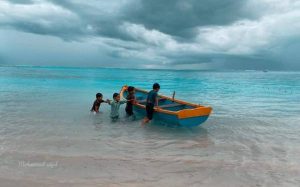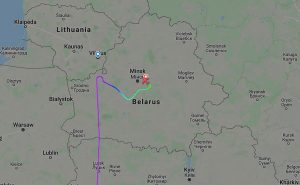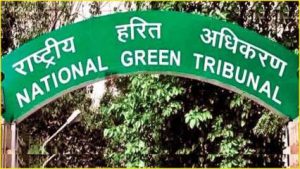Today Current Affairs: 25th May 2021 for UPSC IAS exams, State PSC exams, SSC CGL, State SSC, RRB, Railways, Banking Exam & IBPS, etc
Table of Contents
India – Israel Agreement On Agriculture Cooperation:

India and Israel have signed “a three-year work program agreement” for development in agriculture cooperation.
- The programme aims to grow existing Centres of Excellence, establish new centers, increase CoE’s value chain, bring the Centres of Excellence into the self-sufficient mode, and encourage private sector companies and collaboration.
- Both countries are implementing the “INDO-ISRAEL Agricultural Project Centres of Excellence” and “INDO-ISRAEL Villages of Excellence”.
Indo-Israeli Agriculture Project:
- Indo-Israeli Agricultural Cooperation Project started in 2008 following the signing of a three-year Action Plan based on a Government to Government Agreement.
- Both started an agricultural fund worth $50 million that focused on dairy, farming technology, and micro-irrigation.
- By March 2014, 10 centers of excellence operated throughout India offering free training sessions for farmers on efficient agricultural techniques using Israeli technological expertise. Vertical farming, drip irrigation, and soil solarization are taught at the centers.
INDO-ISRAEL Villages of Excellence (IIVOE):
- This is a new concept aimed at creating a model ecosystem in agriculture across eight states, alongside 13 Centers of Excellence within 75 villages.
- The program will promote the increase of net income and better the livelihood of the individual farmer, transforming traditional farms into modern-intensive farms based on Indo-Israel Agriculture Action Plan (IIAP) standards.
- A large-scale and complete value chain approach with economic sustainability, embedded with Israeli novel technologies and methodologies will be tailored to local conditions.
- The IIVOE program will focus on (1) Modern Agriculture infrastructure, (2) Capacity Building, (3) Market linkage.
Protected Planet Report 2020:

The report, titled Protected Planet Report 2020, underlined the progress the world has made toward the ambitious goals agreed by countries in 2010 at the United Nations Convention on Biological Diversity.
- The reports are released by the United Nations Environment Programme (UNEP) World Conservation Monitoring Centre (UNEP-WCMC) and the International Union for the Conservation of Nature (IUCN) with support from the National Geographic Society, a global non-profit.
- These are biennial landmark publications that assess the state of protected and conserved areas around the world.
- The report is the first in the series to include data on Other Effective Area-based Conservation Measures (OECM) in addition to protected areas.
- OECM are a conservation designation for areas that are achieving the effective in-situ conservation of biodiversity outside of protected areas.
- The 2020 edition provides the final report on the status of Aichi Biodiversity Target 11, and looks to the future as the world prepares to adopt a new post-2020 global biodiversity framework.
- Aichi Biodiversity Target 11 aimed to conserve 17% of land and inland water ecosystems and 10% of its coastal waters and oceans by 2020.
Findings of the Report:
- Increase in Protected Area:
- As many as 82% of countries and territories have increased their share of protected area and coverage of Other Effective Area-based Conservation Measures (OECM) since 2010.
- Protected areas covering almost 21 million km2 have been added to the global network.
- Increase in OECMs:
- Since OECMs were first recorded in 2019, these areas have added a further 1.6 million km2 to the global network.
- Despite being limited to only five countries and territories, the available data on OECMs show that they make a significant contribution to coverage and connectivity.
- Of the area now covered by protected areas and OECMs, 42% was added in the past decade.
- Key Biodiversity Areas (KBAs):
- KBAs are sites that contribute significantly to the global persistence of biodiversity, in terrestrial, freshwater and marine ecosystems.
- On an average, 62.6% of KBA either fully or partially overlap with protected areas and OECMs.
- The average percentage of each KBA within protected areas and OECMs is 43.2% for terrestrial; 42.2% for inland water and 44.2% for marine (within national waters).
- There was an increase of 5 percentage points or less in each case since 2010, the greatest growth in marine and coastal areas.
MCA 21 Version 3.0: Digital Corporate Compliance Portal:

The government launched the first phase of the latest update to its digital corporate compliance portal, Ministry of Corporate Affairs (MCA) 21 Version 3.0.
- It will help in improving the Ease of Doing Business in India. India ranked 63rd out of 190 countries in Ease Doing Business 2020: World Bank Report.
- It will leverage the use of the latest technologies to further streamline the Corporate Compliance and stakeholders’ experience.
- MCA 21 has been part of Mission Mode projects of the Government of India.
- MCA21 Version 3.0 is part of the 2021 Budget announcement.
- MCA21 is the online portal of the Ministry of Corporate Affairs (MCA) that has made all company-related information accessible to various stakeholders and the general public. It was launched in 2006.
- The entire project is proposed to be launched within the Financial Year 2021-22 and will be data analytics and machine learning-driven.
- The MCA21 V3.0 in its entirety will not only improve the existing services and modules but will also create new functionalities like e-adjudication, compliance management system, advanced helpdesk, feedback services, user dashboards, self-reporting tools, and revamped master data services.
- It comprises a revamped website, new email services for MCA Officers, and two new modules, namely, e. Book and e. Consultation.
- It is designed to fully automate all processes related to the proactive enforcement and compliance of the legal requirements under the Companies Act, 1956, New Companies Act, 2013 and Limited Liability Partnership Act, 2008.
- This will help the business community to meet its statutory obligations.
Lakshadweep Development Authority (LDA):

Discontent is simmering in the Lakshadweep group of islands over the creation of a Lakshadweep Development Authority (LDA) by the new administrator Praful Khoda Patel
- Mr. Patel, a BJP leader and former Home Minister of Gujarat, is the first political appointee as Administrator, a post mostly held by retired civil servants.
- Islanders have pointed out that the legislation is out of sync with the social and environmental realities of the archipelago.
- The creation of the Lakshadweep Development Authority (LDA), with extensive powers, including eviction of landowners, is widely read as having been pushed by the real estate lobby and against the interest of the islanders.
- Hundreds of islanders have written to the administrator demanding the withdrawal of the proposed regulation, which makes provision for the
- orderly and progressive development of land in both urban and rural areas and to preserve and improve the amenities thereof;
- grant of permission to develop land and for other powers of control over the use of land;
- conferring additional powers in respect of the acquisition and development of land for planning.
Belarus:

The authoritarian President Alexander Lukashenko of Belarus sparked international outrage after his regime forced a commercial airline flying from Greece to Lithuania to land in its territory allegedly on the pretext of a bomb scare, so it could arrest a dissident journalist on board.
- The journalist, Roman Protasevich, is a prominent opponent of Lukashenko and had been living in exile in neighbouring Lithuania since fleeing his home country in 2019. Protasevich, 26, is the co-founder of the NEXTA media outlet on the social media platform Telegram.
- In November 2020, he was charged in Belarus with inciting public disorder and social hatred. The regime has also put his name on a list of terrorists, and if convicted, he could face the death penalty.
- Opposition leaders have denounced the incident as an act of terrorism by the state and infuriated Western leaders are discussing possible consequences for Belarus.
- Belarus is a landlocked country in Eastern Europe.
- It is bordered by Russia to the east and northeast, Ukraine to the south, Poland to the west, and Lithuania and Latvia to the northwest.
- Minsk is the capital and largest city.
- In the aftermath of the Russian Revolution in 1917, Byelorussian SSR became a founding constituent republic of the Soviet Union in 1922. During the dissolution of the Soviet Union, Belarus declared independence in 1991. In 2000, Belarus and Russia signed a treaty for greater cooperation, forming the Union State.
- It has shown no aspirations for joining the European Union.
- Alexander Lukashenko was elected Belarus’s first president in the country’s first and only free election post-independence, serving as president ever since.
Mandatory Hallmarking Of Gold Jewellery And Artefacts:

The Centre further extended the deadline for mandatory hallmarking of gold jewellery and artefacts by a fortnight till June 15 in view of the COVID-19 pandemic.
- In November 2019, the government had announced that hallmarking of gold jewellery and artefacts would be made mandatory across the country from January 15, 2021.
- However, the deadline was extended for four months till June 1 after jewellers sought more time in view of the pandemic.
- Gold hallmarking is a purity certification of the precious metal and is voluntary in nature at present.
- The hallmarking of jewellery/artefacts is required to enhance the credibility of gold jewellery and customer satisfaction through third party assurance for the marked purity/fineness of gold.
- According to BIS, mandatory hallmarking will protect the public against lower caratage and ensure consumers do not get cheated while buying gold ornaments and get the purity as marked on the ornaments.
- A committee, headed by Bureau of Indian Standards (BIS) Director-General Pramod Tewari, has been formed to ensure proper coordination and resolve the implementation issues.
- From June 15, jewellers will be allowed to sell only 14, 18 and 22 carats of gold jewellery.
- The BIS has been running a hallmarking scheme for gold jewellery since April 2000. Around 40 per cent of gold jewellery is being hallmarked currently.
Foreign Direct Investment (FDI): Measures Taken By The Government:

Measures taken by the Government on the fronts of Foreign Direct Investment (FDI) policy reforms, investment facilitation and ease of doing business have resulted in increased FDI inflows into the country.
The following trends in India’s Foreign Direct Investment are:
- India has attracted highest ever total FDI inflow of US$ 81.72 billion during the financial year 2020-21 and it is 10% higher as compared to the last financial year 2019-20 (US$ 74.39 billion).
- FDI equity inflow grew by 19% in the F.Y. 2020-21 (US$ 59.64 billion) compared to the previous year F.Y. 2019-20 (US$ 49.98 billion).
- In terms of top investor countries, ‘Singapore’ is at the apex with 29%, followed by the U.S.A (23%) and Mauritius (9%) for the F.Y. 2020-21.
- ‘Computer Software & Hardware’ has emerged as the top sector during F.Y. 2020-21 with around 44% share of the total FDI Equity inflow followed by Construction (Infrastructure) Activities (13%) and Services Sector (8%) respectively.
- Under the sector `Computer Software & Hardware’, the major recipient states are Gujarat (78%), Karnataka (9%) and Delhi (5%) in F.Y. 2020-21.
- Gujarat is the top recipient state during the F.Y. 2020-21 with 37% share of the total FDI Equity inflows followed by Maharashtra (27%) and Karnataka (13%).
- Out of top 10 countries, Saudi Arabia is the top investor in terms of percentage increase during F.Y. 2020-21. It invested US$ 2816.08 million in comparison to US$ 89.93 million reported in the previous financial year.
Zoonotic Diseases:

The World Health Organization (WHO) has formed a high-level expert panel ‘One Health’ to study the emergence and spread of zoonotic diseases like H5N1, avian influenza, MERS, Ebola, Zika, and possibly the novel coronavirus disease (COVID-19).
- The panel will advise global agencies on how future outbreaks, especially due to zoonotic diseases, can be averted.
- It will also develop a surveillance framework and global action plan for the same.
- Zoonotic diseases’ pathogenic infections that transmit from animals to humans have triggered pandemics in past as well. Three of every four infectious diseases are caused by zoonosis. Scientists across the world suspect COVID-19 is also a zoonosis.
- One Health is the collaborative efforts of multiple disciplines working locally, nationally, and globally, to attain optimal health for people, animals, and our environment, as defined by the One Health Initiative Task Force.
- One Health model facilitates an interdisciplinary approach in disease control so as to control emerging and existing zoonotic threats.
Zoonotic diseases:
- The word ‘Zoonosis’ (Pleural: Zoonoses) was introduced by Rudolf Virchow in 1880 to include collectively the diseases shared in nature by man and animals.
- Later WHO in 1959 defined that Zoonoses are those diseases and infections which are naturally transmitted between vertebrate animals and man.
- Zoonoses may be bacterial, viral, or parasitic, or may involve unconventional agents.
The National Green Tribunal (NGT):

The National Green Tribunal (NGT) ordered all encroachments to be removed from Gujarat’s Banni grasslands within six months and directed a joint committee to prepare an action plan in a month.
- The court also said the Maldharis will continue to hold the right to conserve the community forests in the area, granted to them as per the provisions in Section 3 of Forest Rights Act, 2006.
- The Maldhari community had filed a case against the rampant encroachment in the ecologically sensitive grassland in May 2018.
- Maldharis are a tribal herdsmen community in Gujarat, India.
- Maldhari community breeds Banni Buffaloes, a species endemic to the region. The buffaloes are adaptive to Kutch’s hot weather conditions.
- Banni grassland is spread over 2,618 kilometres and accounts for almost 45 per cent of the pastures in Gujarat.
- It comprises 48 hamlets/villages organized into 19 panchayats, with a population of about 40,000.
- Two ecosystems, wetlands and grasslands, are juxtaposed in Banni.
- The area is rich in flora and fauna, with 192 species of plants, 262 species of birds, several species of mammals, reptiles and amphibians.
National Award 2021 From Technology Development Board (TDB):

A Bangalore-based startup has received the National Award 2021 from the Technology Development Board (TDB) for developing a commercial solution for the conversion of carbon dioxide (CO2) to chemicals and fuels.
- The startup has received funding under the Nano Mission.
- The startup developed efficient catalysts and methodologies for the conversion of carbon dioxide (CO2) to methanol and other chemicals.
- It has led to the improvisation of process engineering to enhance the production of chemicals and fuels from anthropogenic CO2 generated from various sources including coal and natural gas power generation sectors, steel industry, cement industry, and chemical industries.
- It has integrated multiple components involved in the CCUS (Carbon Capture, Utilization, and Sequestration) to develop a complete solution for the environmental issues due to global warming.
- The Recycling Carbon Technology will be transferred to Jawaharlal Nehru Centre for Advanced Scientific Research (JNCASR), an autonomous institute of the Department of Science and Technology.
Carbon Capture, Utilization, and Sequestration (CCUS):
- It is a process that captures carbon dioxide emissions from sources like coal-fired power plants and either reuses or stores it so it will not enter the atmosphere.
- Carbon dioxide storage in geologic formations includes oil and gas reservoirs, unmineable coal seams, and deep saline reservoirs – structures that have stored crude oil, natural gas, brine, and carbon dioxide over millions of years.




